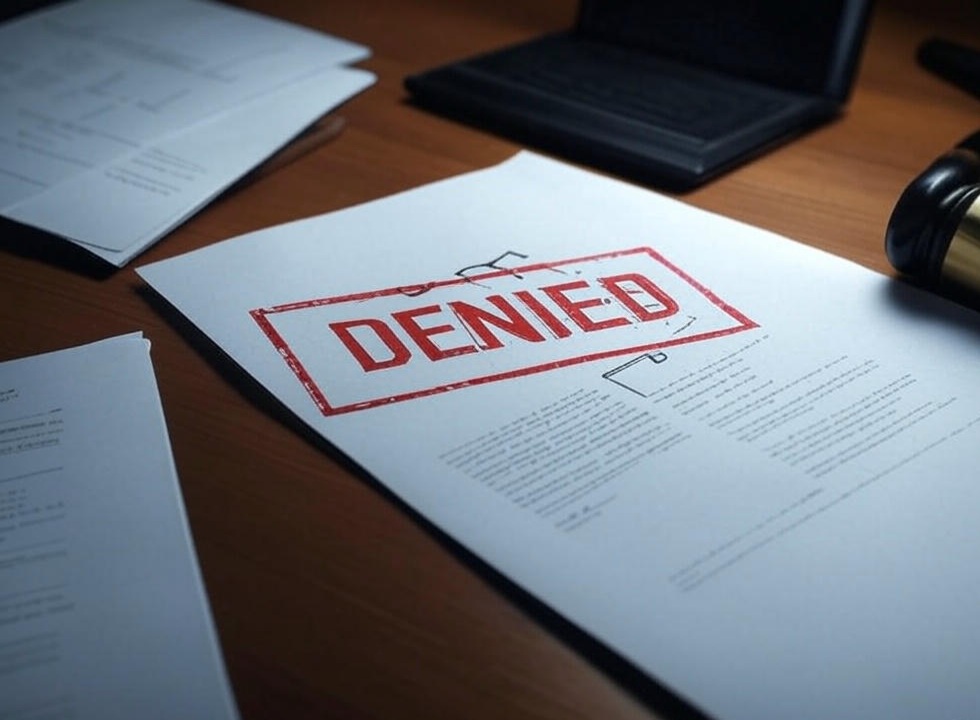Facing a denied insurance claim can feel like a slap in the face. You’ve paid your premiums month after month, expecting a safety net when disaster strikes, only to get a cold rejection from your insurer. It’s frustrating, even infuriating, but it’s not the final chapter. You’ve got options, and with a solid plan, you can fight back and possibly secure the payout you’re entitled to.
I’m a public adjuster with years of experience and I specialize in helping people like you tackle insurance claim denials or under-payments head-on. My mission is to transform your disappointment into a win by giving you a clear, actionable roadmap to challenge that denial. This guide walks you through every step—whether it’s a homeowners or business insurance claim.
Understanding the Denial: Why Did This Happen?
Before you can overturn a denial, you need to understand why it happened. Insurance companies say they don’t just deny claims for fun—they attempt to give reasons tied to policy terms, evidence, or timing. Here’s a rundown of the most common culprits:
- Policy Exclusions: The damage or loss isn’t covered. Think flood damage on a basic homeowners policy or wear and tear on your roof.
- Late Filing: You missed the cutoff to submit your claim or paperwork. Insurers love strict deadlines, and slipping up can mean an instant “no.”
- Lack of Evidence: They say you didn’t prove the loss well enough—maybe not enough photos, no receipts, or missing expert input.
- Causation Disputes: They argue the damage wasn’t from a covered event. For example, they might blame poor upkeep instead of a storm.
- Pre-existing Conditions: They claim the damage was there before your policy kicked in, a frequent excuse in property claims.
Your denial letter—required by law in most states—lays out their reasoning. Dig it out; it’s our launchpad. I’ll break it down with you, pinpoint their logic, and find cracks I can pry open to your advantage.
Step 1: Dig Into Your Insurance Policy
Your policy is the playbook, and knowing it inside out is our first play. Don’t sweat the legalese—I’ve got this. Here’s what I’ll do for you:
- Read the Fine Print: I’ll sift through coverage limits, exclusions, and conditions to check if the denial stands up. Policies are a slog, but I know the shortcuts.
- Spot Errors: Insurers can misread their own rules. If they’ve botched an exclusion or ignored a covered event, I’ll nail it.
- Clarify Ambiguities: Fuzzy policy wording often tilts in your favor thanks to legal rules like “contra proferentem” (doubt sides with the policyholder). I’ll leverage that.
Say your claim got rejected for “water damage,” but your policy covers “sudden and accidental” leaks. I’ll make that case. Or imagine they cite “flood damage” as excluded, yet the issue was a burst pipe—I’ll argue it’s not a flood, it’s a covered incident. These distinctions can flip the script. Your policy’s our weapon, and I’m here to wield it.
Step 2: Build a Rock-Solid Case with Evidence
If they’re saying “not enough proof” or “wrong cause,” we’ll hit back with evidence they can’t ignore. I’ll guide you on what to gather:
- Photos and Videos: Before-and-after shots, timestamped if you can. For a car crash, multi-angle pics show the full damage.
- Expert Opinions: Reports from contractors, engineers, or appraisers to back up your loss. A structural hit to your house? An engineer’s word seals it.
- Witness Accounts: Neighbors or passersby who saw it happen. Vandalism claim? A neighbor’s statement can clinch it.
- Cost Estimates: Detailed repair or replacement quotes from pros. Roof damage? A roofer’s breakdown proves your numbers.
Here’s a tip: Start documenting right after the loss—evidence fades fast. Got receipts for quick fixes, like boarding up windows post-storm? Keep them; they count too. I’ll pull it all together into a tight, undeniable package.
Let’s dig deeper: Suppose your basement flooded from a pipe burst. I’d push you to grab video of the water pouring in, a plumber’s report on the pipe’s failure, and receipts for any sump pump you rented. That’s the kind of ammo that shifts the tide.
Step 3: Launch Your Appeal
With policy in hand and evidence stacked, it’s time to appeal. This isn’t a plea—it’s a calculated counterpunch. Here’s my approach:
- State Your Case: I’ll write a sharp explanation of why they’re wrong, tied to your policy’s language. Specific clauses, like “Section B, Coverage A,” will back us up.
- Back It Up: I’ll attach all evidence, linking it to policy terms. Every photo or report will have a purpose.
- Meet Deadlines: Policies often set appeal windows—miss them, and you’re sunk. I’ll keep us on track.
I’ll craft an appeal letter that’s all business—facts over feelings. Insurers shrug off sob stories but buckle under solid arguments. The process usually means filing a formal reconsideration request with your evidence. I’ll walk you through it, from drafting to submission, and step in for any insurer meetings if it comes to that.
For example, if they denied your claim over a “late filing,” I’ll check the policy’s fine print and your submission dates. If their deadline’s unclear or you mailed it in time, I’ll hammer that home in the appeal.
Step 4: Negotiate Like a Pro
Post-appeal, they might budge—full reversal, partial offer, or stonewalling. That’s when I negotiate. Here’s my game plan:
- Push Back: Low offers or shaky logic get challenged with evidence and policy terms. I won’t let them shortchange you.
- Ask Questions: I’ll make them explain their stance, poking holes where I can. Weak answers mean leverage.
- Aim High: I’ll go for your claim’s full worth, not their scraps. We start big, leaving room to bargain.
With 15+ years in this, I know the moves. One trick? Open with a higher demand than your target—it sets the bar and gives wiggle room. If they balk, I’m ready to walk, which can jolt them into a better deal. My aim’s a payout that matches your loss, not their profit margin.
Picture this: They offer $5,000 on a $20,000 claim. I’ll counter with evidence proving the full cost—contractor quotes, photos—and demand $22,000. They’ll counter, but we’ll land closer to what you deserve.
Step 5: Escalate If Needed—Legal Options
If they won’t play fair, we’ve got a trump card: legal action. It’s not light work, but it’s an option. Here’s what I’ll help you weigh:
- Consult an Attorney: I’ll link you with insurance litigation pros who know the drill. They’ll gauge if it’s worth it.
- Weigh the Costs: Lawsuits eat time and cash—your claim’s value has to justify it. I’ll break down the numbers.
- Bad Faith Claims: If they’ve jerked you around—like stalling for no reason—we might chase extra damages. I’ll spot the signs.
Legal fights aren’t for all, but they can force results. If you go this route, I’ll team up with your lawyer, supplying docs and expertise to strengthen your case. I’ll lay out the pros and cons so you choose smart.
Say they delayed your claim six months with no excuse—I’d flag that as potential bad faith, boosting your leverage in court.
Why I’m Your Secret Weapon
Going it alone against an insurer is like boxing blindfolded. As your public adjuster, I’m your edge. Here’s why I matter:
- Expertise: I unravel policies and find gaps they hope you’ll miss. My know-how gives you a shot.
- Advocacy: I’m your fighter, not theirs. My loyalty’s to you, period.
- Results: My history’s full of bigger payouts, quicker wins, and less hassle for clients. I turn “no” into “yes.”
I’m your brain trust in the trenches. I’ve handled everything—small squabbles to epic showdowns—and I’ll make this as painless as possible for you.
Practical Tips for Policyholders
I’ll carry the load, but you can pitch in. Here’s how:
- Stay Organized: Keep all claim stuff—letters, emails, pics—in one spot. It speeds me up.
- Act Fast: Time’s your enemy; delays hurt. Reach out to me ASAP.
- Don’t Sign Too Soon: Quick settlements can rip you off. I’ll vet any offer for fairness.
Little moves from you can tip the scales.
Real-World Example: Turning a “No” Into a “Yes”
Here’s a win: A homeowner’s storm damage claim got denied as “pre-existing wear.” I dug into the policy, found “windstorm event” coverage, and paired it with photos and a meteorologist’s report linking the damage to a specific storm. After an appeal and some haggling, the insurer coughed up $45,000—full roof replacement. That’s what grit and smarts can do.
Extra Insight: Common Pitfalls and How I Dodge Them
Insurance fights have traps, but I’ve learned the map. Claimants often trip by accepting denials at face value—I don’t. They miss deadlines—I won’t. They skimp on evidence—I pile it on. One client nearly settled for $2,000 on a $15,000 claim because they didn’t know their policy covered “hidden damage.” I caught it, appealed, and got them $14,500. That’s the difference I bring.
Take Control of Your Denied Insurance Claim
A denial’s not the end—it’s a detour. With this plan—grasping the denial, mastering your policy, piling up evidence, appealing, negotiating, and escalating if needed—you can claim what’s yours. I’m here to drive it home, flipping rejections into victories with strategy and hustle.
Don’t let their “no” stand. Contact me today, and let’s build your case. Your denied insurance claim could be my next triumph.



